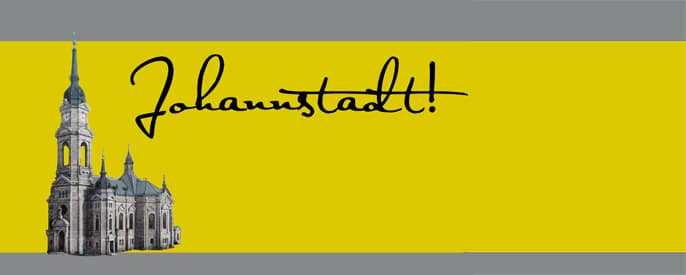This site is available in multiple languages: Deutsch, Русский, عربي.
Continue down Gerokstraße to the intersection of Dürerstraße. There you will find the 12th and final location of the historical walking tour.
Before 1945: Laundry, gymnastics and phone calls
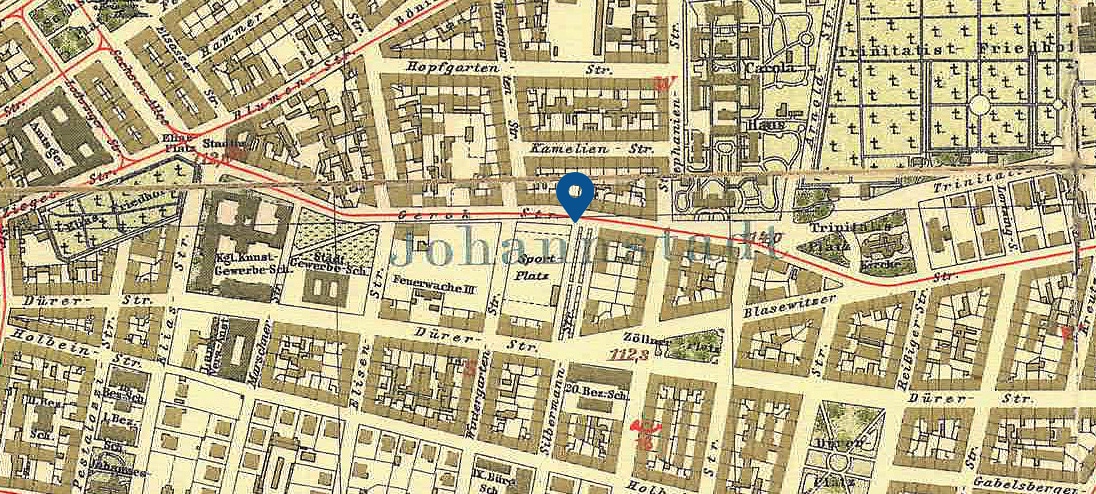
From a drying area to Post Office No. 16
A restaurant by the name of “Zur alten Vogelwiese”—which points to the earlier location of Dresden’s Vogelwiese—can be seen on older city maps in the area of today’s Permoserstraße and Dürerstraße. On the same spot around 1900, there was a commercial laundry drying area right in the middle of the residential area until it was forced to give way to a gymnastics and sports area by 1910. The space was finally occupied in 1934 by a new school building which still stands today.
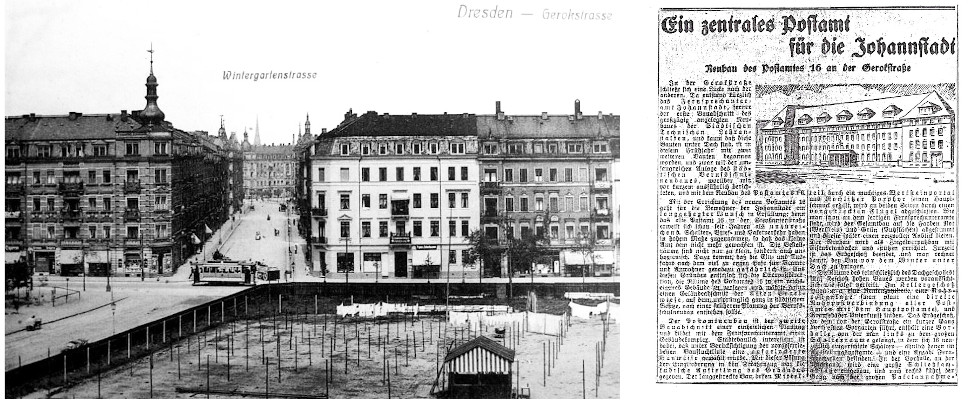
Right: Article about the new construction of the post office on Gerokstraße, Dresdner Anzeiger, from the Gonschorek collection
In 1926, Post Office No. 16 was built in two phases, directly adjacent to the drying area. The structure unites a multi-wing reinforced concrete building with traditional cubage, a simple plaster facade and base cladding made from Rochlitz porphyry. The entry portico, the risaltos (projections) and—foremost—the public square-like expansion in front of the building all brought special touches to the design. Next to the Reichspost and the telephone exchange, there was a telephone workshop.
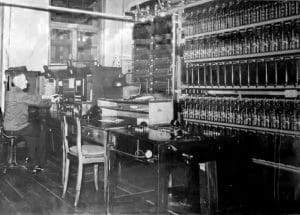
On the rear side of the post office was the Feuerwache III (fire station) in a recessed, courtyard-like setting. Here horses were employed as draft animals. After the First World War, the fire station was turned into a medical transport center with hearses. The building fell victim to the bombs of 1945. On the exact same spot today stands a Netto supermarket.
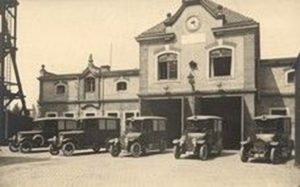
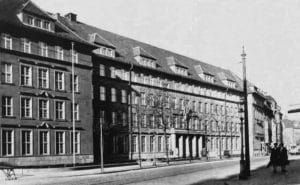
Boer House and Silbermannstraße
At Silbermannstraße 22 once stood the Boer House, built by the ca. 100 “white Africans” who had fled South Africa in the wake of the Boer Wars. Its completion was celebrated by its residents on July 25, 1901, together with the unveiling of a monument to the Transvaalian president, Ohm Paul Krüger, embedded in its facade. The shutters were in the country’s colors of blue, white and red.
Laid in 1883, Silbermannstrasße ran in front of the Boer House, and that the time stretched from Striesener Straße on past Zöllnerplatz to Gerokstraße. The original trajectory is still easily recognizable thanks to the old ash trees. The name of the street came from famous organ- and piano-maker, Gottfried Silbermann (1683–1753). The progressive educational Dürer School was located at number 5 until its closure by the Nazis in 1935.
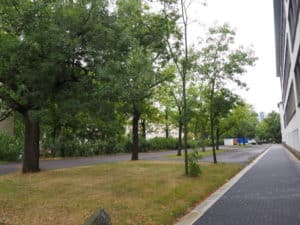
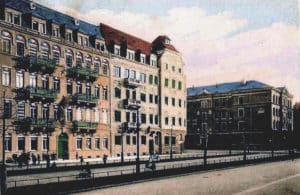
After 1945: Mainframe computers, technical schools, cinematic magic
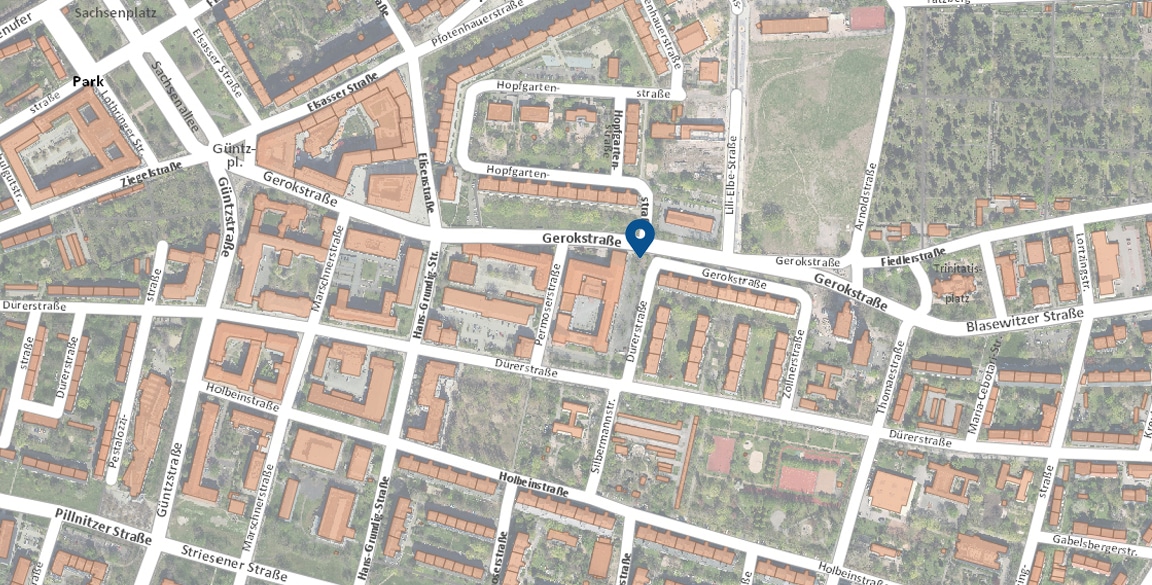
From rubble removal to mainframe computing
The aerial attacks of February 1945 damaged nearly all the buildings on Gerokstraße so badly that they needed to be demolished in the years that followed. The post office, however, was able to finally be restored in 1953. From 1967 to 1969, the GDR Ministry for Postal Telecommunications invested over three million Marks in one of the country’s first mainframe computers (type “R300”), which was built in Radberg. A suitable building—still standing today—was constructed for the computer. Up until 1990, all payroll for the Deutsche Post was processed here. After the mainframe computer was scrapped, the Post used the building solely as a canteen. It is empty as of 2020. The unremarkable building with its typical colored sheet glass facade is one of the last examples of the industrial architecture of the 1960s. –
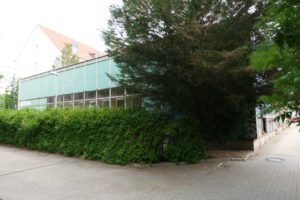
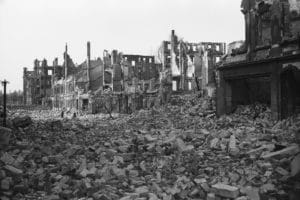
The Gustav Anton Zeuner Vocational School Center
The school complex and its farmsteads known as the Gustav Anton Zeuner Vocational School Center for Technology is one of the most modern educational installations of its time. The reinforced concrete school building on Gerokstraße—designed by city planner Paul Wolf and, after serious delays in construction, opened in 1934 by the Nazis as part of a propaganda campaign—only suffered mild damage during the bombardment. It brought together three Altstadt boys’ vocational schools under one roof, all sales-oriented and diverse grades from commercial vocational school.
Countless area businesses helped the school rebuild after 1945. Since all other community colleges had been destroyed, in 1948, the building housed the 53rd community college, which stayed until the middle of the 1980s as the 53rd Polytechnic Secondary School. The vocational school was then, in 1955, split up into two “commercial vocational schools”, and was brought back together in 1969, under the name, “Communal Vocational School I”. Since 2004, the school has been called the Gustav Anton Zeuner Vocational School Center for Technology. The vocational school, the technical college and the technical secondary school have all found safe homes within its current academic profile. Every year, around 1,900 students, instructed by 76 teachers, are trained here in the trades of automobile technology and metals technology, as well as sanitation, heating and cooling technology.
Find more information about the history of the Vocational School Center here.
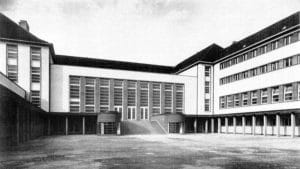
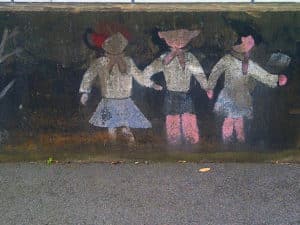
The cinematic hotspot of the Dresdner Programmkino
After 1990, the “Nickelodeon” film theater was founded in the auditorium building of the engineering college (today, the Evangelical College for Social Work). It was the first privately-run—and then later, students’—art house cinema after reunification. The owner was the “cinema king”, Frank Apel, who in later years would be become known internationally for running the “Schauburg” and “Casablanca” cinemas in the Neustadt, the “KIF” (Cinema in the Factory) in Löbtau and the large cinema, “Metropolis”, at the Waldschlösschen. In addition, the “Gerokstraße Film Theater”, led by a student initiative, was located in the gymnasium of the current Vocational School Center.
Find more information about the “Nickelodeon” film theater here.
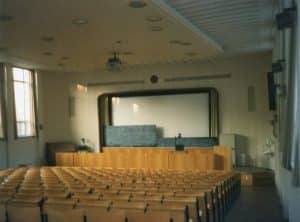
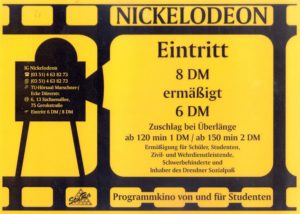
Text: Matthias Erfurth, Matthias Kunert, Henning Seidler
Editorial deadline: January 2024
